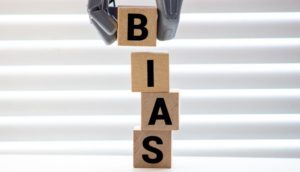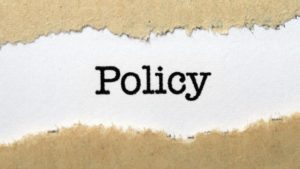Table of Contents
Unconscious bias in a working environment is a subliminal preference that may impact your leadership abilities based on certain pieces of information and knowledge that you’ve picked up through experience in your life.
Although unconscious bias isn’t illegal, unlike employee discrimination, your biases can impact your abilities as a leader in your organisation, and can hinder everything from the hiring process right through to how you work with your team on a daily basis, and everything in between.
Unconscious bias is very difficult to pin down since, as the name suggests, it is unconscious. And as much as we’d like to work from a clean slate, our biases will always creep into the way we behave around others.
However, that’s not to say that this is something we can simply ignore; as a leader in any organisation, it’s up to you to understand the signs and keep them in check.
Although this is a skill that requires some time and patience to truly master, once you’ve done so, there is enormous potential, not only in the workplace but in all other walks of your life as well.
In this blog, we’ll be walking you through exactly what unconscious bias is and how you can identify and address it.
Unconscious Bias Explained
Before we begin to understand how you can begin to deal with unconscious bias, it’s quite important to first dig deep into what it truly means.
For HR leaders, unconscious bias isn’t new. In fact, it’s something that is constantly on their radar. However, for most leaders outside of this space, it’s not something that is often talked about, let alone understood.

This isn’t to say that everyone should be and think the same; far from it! Everyone is defined by their own personal experiences of the world, and age, race, gender, and principles play a distinct role in shaping each of us.
We’re also shaped by the world of work too, and things like industry, company size, and locations can also mould our view and understanding of our surroundings.
According to Imperial College London, one of the foremost research universities in the world, unconscious bias is defined as, “Unconscious (or implicit) bias is a term that describes the associations we hold outside our conscious awareness and control. Unconscious bias affects everyone.”
8 Ways to Identify & Address Unconscious Bias
Unconscious bias is a reflex which makes snap judgements and assessments. As we’ve mentioned, these are influenced by our backgrounds, personal experiences, societal influences, and cultural environments.
That said, this reflex isn’t just triggered by gender, ethnicity or other visible diversities; things like height, weight, names, and many other seemingly insignificant things can also create unconscious bias.
Because of the highly personal and obviously unwitting nature of this kind of bias, it’s often very difficult to identify and address. However, it can be done with some hard-hitting questions, an open mind and a willingness from yourself and your team to challenge the status quo.
1. Be Open to Education
Learning where your unconscious biases lay can only really be identified with a willingness from both you and your team to educate yourselves on the different ways that biases can creep into the workplace and, indeed, society as a whole.

Some of the most obvious are biases such as gender bias, racial bias and age bias. However, it’s important to really take the time to understand that there are actually many different markers that may trigger certain biases without us even knowing about them.
2. Reflect on Your Own Biases
“Although it’s a great idea to work with your team to identify unconscious biases, it really doesn’t work if you’re unwilling to look inwards and ask yourself some uncomfortable questions.” Explains Richard LeCount, business expert and Managing Director of usbmakers.com.
As we’ve already covered, we’re all moulded to have differing views when it comes to our beliefs, attitudes and behaviours towards others – the trick here is to understand why this is the case and acknowledge that this is a normal part of being human.
Once you’re able to pinpoint what they are, you can start to make a more conscious effort to disregard them.
3. Challenge Stereotypes
Stereotypes of gender, ethnicity and age are prevalent in all walks of life, and in order to make steps in the right direction, we need to be able to feel comfortable with challenging views that are both harmful and negative.

Work with your team to make the conscious decision to avoid making snap judgements and assumptions based on certain characteristics and be open and honest with each other as you challenge stereotype biases.
4. Review Decision-Making Processes
Take a look at the way you make decisions and the processes that you might have put in place for others to make decisions, and ask yourself whether any biases might be influencing your judgements.
For example, you might want to ask yourself whether you’re giving all employees fair and equal opportunities or if are you favouring certain people unconsciously when recruiting.
5. Encourage Diversity & Inclusion
Once you’ve examined the decisions you make and why you’re making them, you can then begin to create a culture that values diversity and inclusion.
Of course, there’s a good chance you’re trying to do this anyway, but this is a good opportunity to promote diversity by encouraging contributions across your organisation to ensure that everyone feels as though they are listened to and valued, no matter their background.
6. Implement Unbiased Policies & Practices
This goes hand in hand with the previous point and should give you a platform to begin reviewing your policies to ensure they are free from bias.

This includes everything from recruitment, promotions, performance reviews, and remuneration, starting by implementing objective criteria for all of these and creating standardised processes that everyone can follow.
For example, this might include:
- Withholding certain information on job applications.
- Utilise data to help make decisions on promotions.
- Employee disciplinaries for discriminatory behaviour.
7. Create an Atmosphere of Open Communication
Of course, the most important part of ensuring that all of the previous points are taken on board and adhered to, is ensuring that you and your team feel comfortable talking openly about unconscious bias and its potential impact even on your small business.
Ensure that you open the lines of communication to ensure that everyone feels as though they have the means to discuss and even report bias-related incidents.
8. Diversify Decision-Making Teams
Once you’ve moved all the other pieces into place, it’s important to ensure that all decision-making teams are represented by those from diverse backgrounds and perspectives. This helps to minimise the impact of unconscious bias in any decision-making process.

This means you’re readily allowing a wider range of opinions and perspectives that you may not have previously had access to. This can help to identify new opportunities, rectify any blind spots and ensure that everyone feels heard and valued.
Takeaways
In conclusion, unconscious bias is a subtle but impactful factor that can affect leadership and work dynamics in a working environment. While it may not be illegal, it can hinder various aspects of the workplace, from the hiring process to daily interactions with team members.
By recognizing and addressing our biases, we can create a more inclusive and equitable work environment that fosters diversity and promotes fair decision-making processes.
It is essential to continuously educate ourselves and strive to minimise the influence of unconscious bias to ensure a more inclusive and respectful work environment for all employees.
Author Profile

- Blogger by Passion | Contributor to many Business Blogs in the United Kingdom | Fascinated to Write Blogs in Business & Startup Niches |
Latest entries
 BusinessDecember 12, 2025The Smart SME’s Guide to Future-Proofing Physical Assets
BusinessDecember 12, 2025The Smart SME’s Guide to Future-Proofing Physical Assets FinanceOctober 28, 2025How to Measure the ROI of Your Promotional Product Campaigns?
FinanceOctober 28, 2025How to Measure the ROI of Your Promotional Product Campaigns? Home & LivingOctober 4, 2025Moving Forward When Leicester Family Dynamics Change
Home & LivingOctober 4, 2025Moving Forward When Leicester Family Dynamics Change BusinessSeptember 22, 2025Always-On SMEs: The UK Business Owner’s Guide to Seamless Travel Data for Sales Trips, Trade Fairs & Remote Teams
BusinessSeptember 22, 2025Always-On SMEs: The UK Business Owner’s Guide to Seamless Travel Data for Sales Trips, Trade Fairs & Remote Teams




